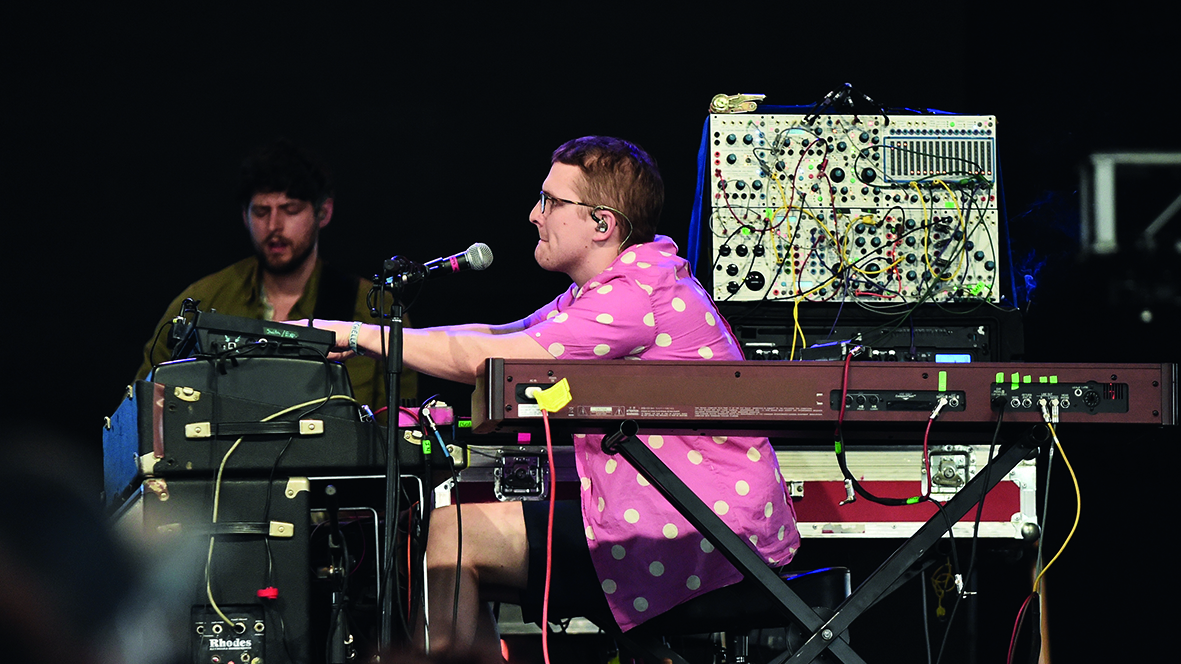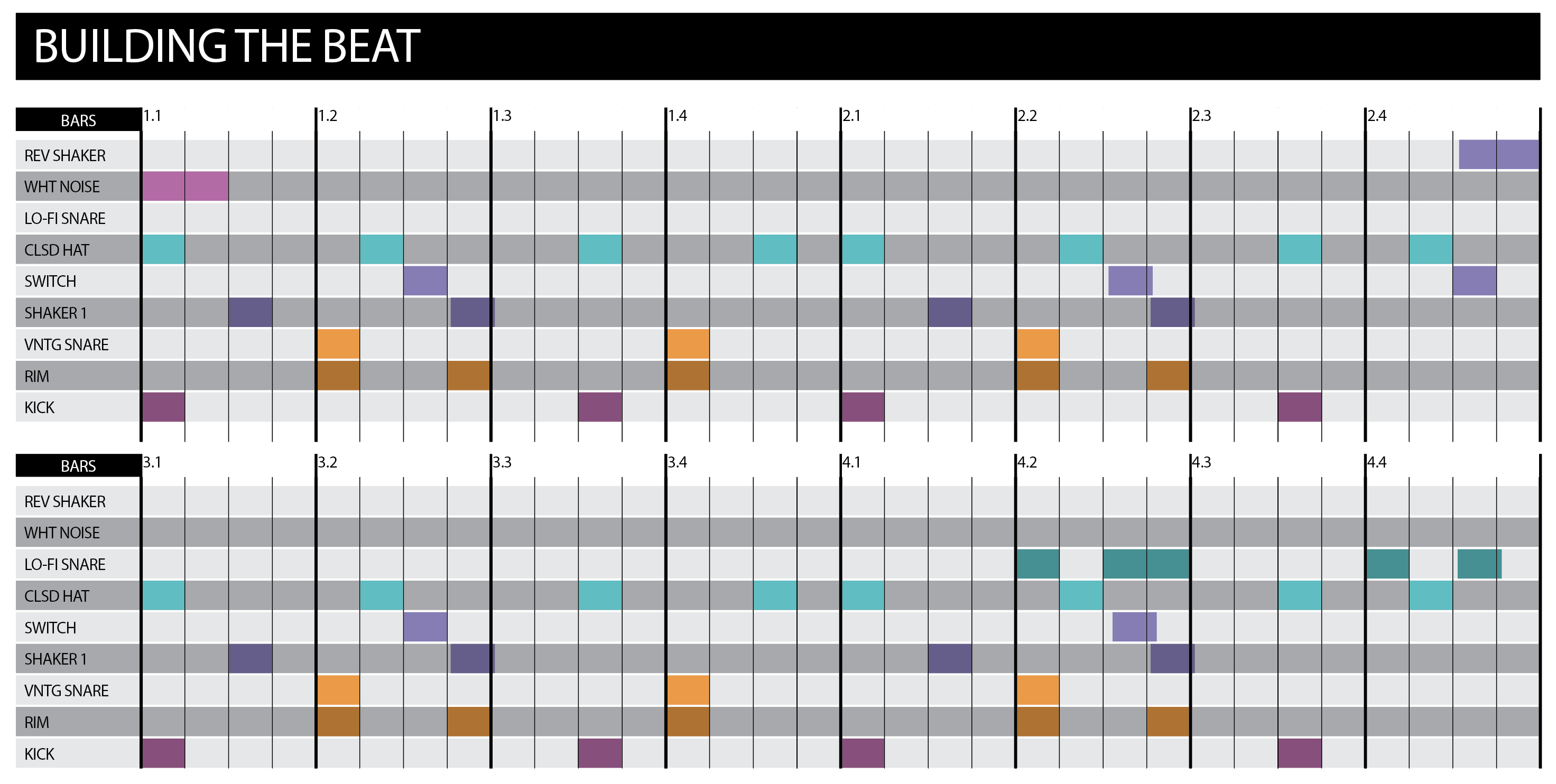Beat Building: how to make a broken UK techno beat
We're showing you how to program convincing drum patterns in a variety of genres. Next up is broken UK techno

In our Beat Building series, we're showing you how to produce beats, grooves and drum patterns in a variety of styles and genres, touching on various eras of production, to help you understand the key rhythmic elements behind many of today’s biggest tracks.
The style of beat we're describing in the headline of this article is less of a specific genre, more a mishmash of influences that has been prevalent among UK producers over the past decade. Think of artists like Joy Orbison, Bicep or Floating Points – musicians broadly described as making techno or house, but incorporating elements of UK garage, breakbeats and IDM.
Kicks tend to be punchy but with plenty of sub – a 909 is a good starting point
The beat is at a standard techno tempo around 130-135bpm but, rather than the usual 4/4 kicks and steady hats, this uses a syncopated rhythm. The kicks are distributed on beats 1 and 3.5, anchored by a prominent snare/stick on the 2 and 4, with skippy, off-beat percussion providing a more lithe, slinky feel than the usual rigidity of techno.
As with the rhythm, the sounds used can be a mishmash of influences. Kicks tend to be punchy but with plenty of sub – a 909 is a good starting point but FM kicks and other vintage grooveboxes work too. Try combining two or more kick sounds and using low-pass filters to darken them.
Snares, percussion and hats can mix drum machine sounds with characterful samples and found sounds. Filtered hats and shakers are often used prominently. Adding a sliced drum break amongst the machine hits can give a hint of jungle/hardcore influence too. Groove-wise, a swing setting between 8-12% adds a touch of garage-like shuffle.
Building the beat...

The aim is to make this beat feel syncopated and broken. There’s no one set way to go about this but you’ll want to break away from the standard 4/4 kick and hat patterns of techno. A good place to start is a UK garage-style pattern with a KICK placed on beats 1 and 3.5 of each bar, and a RIMSHOT on beats 2 and 4.
These will anchor your beat. Sonically you want them punchy but with plenty of weight. We’ve used a subby 909 kick with a short decay, and applied punchy compression, saturation and low-pass filtering. Our rim is a sample of a real drum hit. For added weight we’ve layered a vintage drum machine snare underneath. A healthy hit of plate reverb on these elements adds presence to the beat.
Get the MusicRadar Newsletter
Want all the hottest music and gear news, reviews, deals, features and more, direct to your inbox? Sign up here.
Here, we’ve deleted the rim/snare from the 4th beat in the second bar. We’ve also added a second rimshot one 16th before beat 3 of each bar. The result is more syncopated (a similar pattern to Bicep’s Glue).
Much of the feel of this beat comes from the HATS/SHAKERS. We’ve used a shaker, a closed hat and a ‘found’ recording of a light switch. Having these dance around one another gives the beat its shuffle feel. Experiment with per-track shuffle or nudge individual shakers off the beat.
We’ve added a lo-fi, sharp snare at the end of the second bar and removed the final shaker, adding to the breakbeat influence. On the first beat, a burst of synth noise acts like a CRASH to mark the 1. Finally, a reversed shaker at the end of bar 1 helps ‘pull’ the listener along.
If you're thinking of taking the beat further, chopped and processed vocal samples are a staple ingredient. Dub-style FX work brilliantly too – try sending your stick/snare to an unsynced tape delay at the end of every phrase. Sub bass is a must: either long notes filling out the low end, or occasional stabs of bass for a more spacious groove.
Check out how the beat should sound in our audio example below.
Get started on building a UK techno beat with these free samples:


Future Music is the number one magazine for today's producers. Packed with technique and technology we'll help you make great new music. All-access artist interviews, in-depth gear reviews, essential production tutorials and much more. Every marvellous monthly edition features reliable reviews of the latest and greatest hardware and software technology and techniques, unparalleled advice, in-depth interviews, sensational free samples and so much more to improve the experience and outcome of your music-making.










